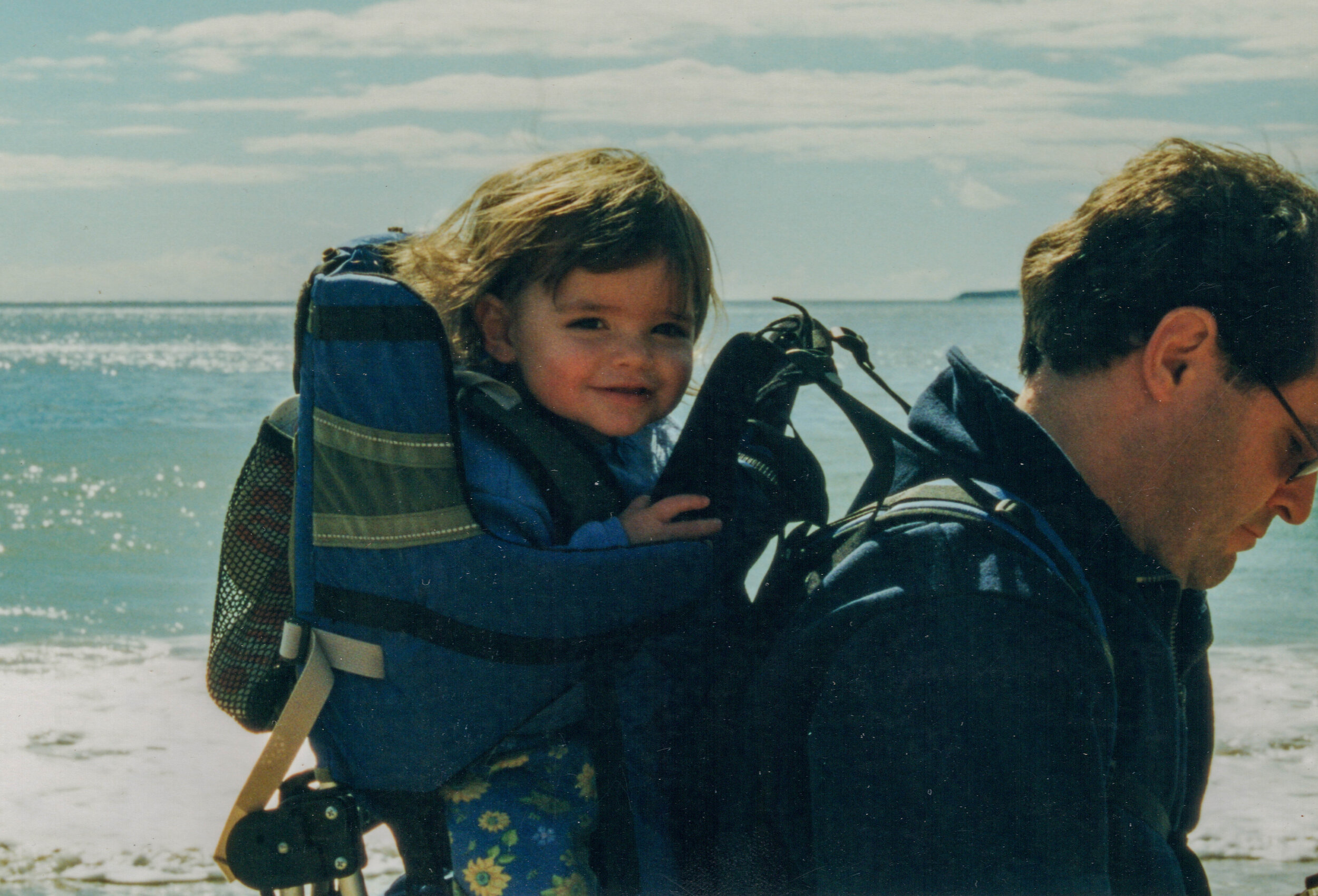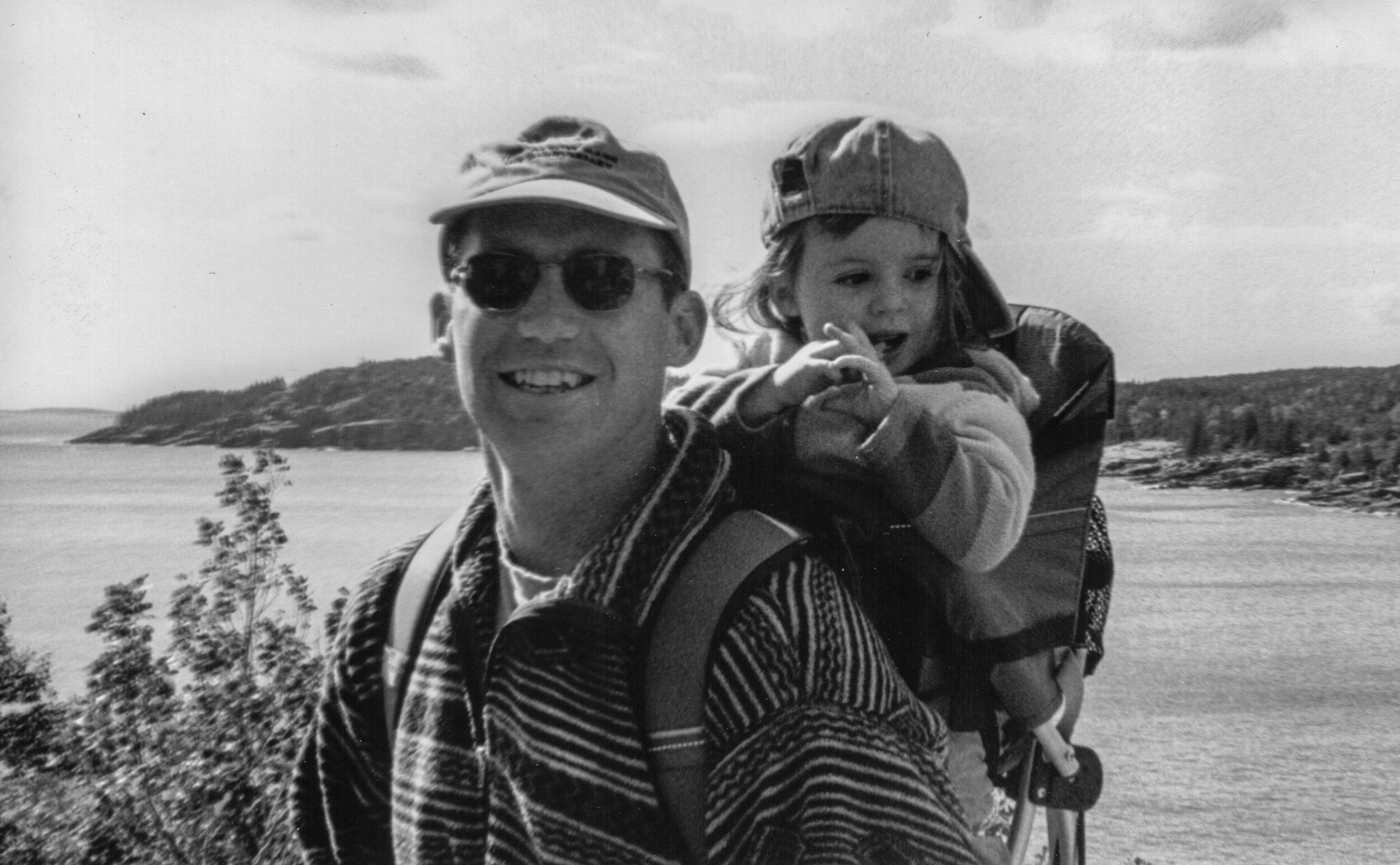In October’s endless brightness I took a walk in the woods with my oldest child.
The trip to Acadia was happenstance. Her college has an odd early fall break, an early long weekend with a Monday and Tuesday off. The rest of the family is just back to school or working.
My daughter loves Acadia and Mount Desert Island. Every summer she goes to a running camp on the island. With a professional staff and college aged counselors, the camp trains some of Maine’s most promising cross country runners. Campers spend the better part of a week sleeping in tents, running the carriage trails of Acadia National Park, swimming its beaches, and staging skits in the campground’s vintage community hall. The most recent summer, after a move from camper to counselor, she embraced the place even more.
Our house has a lot of old nautical charts and survey maps kicking around. Older damaged ones get used as makeshift wrapping paper; the featured locale may match the gift or the recipient. In September she asked me if we had an intact map of MDI for her dorm room wall.
As we pondered what to do with this weird fall break, I won a national parks pass in a drawing at work. Entry required a one sentence essay on what I’d do with the pass if my entry was drawn—I used a semi-colon, some dashes, and more than a handful of commas. For good measure I smuggled in another thought in a parenthetical. I work for a large well-known outdoor products manufacturer that for more than 100 years has made the same iconic piece of footwear; for many people the boot and the company symbolize Maine: flannel, fresh air, pine, the crunch of fallen leaves, or crust on snow.
One of the central ironies of my job is that I spend my working days far from the out-of-doors. The stark realities of an efficient modern facility that saves Christmas for millions year after year is that many of us spend our working days indoors with the hum and buzz of machinery in place of the snap of twigs and birdsong. But with liberal access to its outdoor programs, bucolic camps owned and maintained just for employees, and programs like the park pass giveaway, time off is focused on the outdoors. And time outdoors is celebrated.
It’s not as though we needed the pass to get into Acadia. Admission is inexpensive; once you’ve been to a national park you realize what a deal it is.
But I do love a bargain. And in this case, the bargain was an inspiration. It got us to Acadia and a few other spots along the road.
My daughter and I had been to Acadia together before. Another odd holiday in the fall of 2001, the season of empty skies: a fall when people gave up planned travel time, skipped weddings they had booked, and went to weddings nearby home to fill in for guests from away who could not fly. A friend was running an Inn on Deer Isle. The guest list dried up, but we were an easy drive away. So with her cousin, born a few months before her, and two sets of parents she spent a few days on Deer Isle exploring quarries, paying homage to Burt Dow, eating in nearly empty but welcoming restaurants, and making a day trip to stroll the nearly empty trails of Acadia strapped to one of her parents’ backs. Hiking with a Kelty pack slows you down. The pace is more a stroll than the forced march of some hikes. It is a lot more about being there than getting there.
Her cousin was walking but my daughter had yet to walk. In fact she didn’t crawl; she was a scooter. But she didn't drag one leg behind and hitch. With her legs nearly perfectly symmetrical and the soles of her feet meeting like hands in prayer, she threw her arms forward and lifted her body, full speed ahead. When moving at full clip she sounded like a dufflepud. The know-it-alls were generous with their gloomy opinions about the repercussions her motility would have for her: reading, writing, speech, gross motor skills, fine motor skills they preached gloom. They were wrong of course.
She rode the Kelty pack like an elephant master steering her beast of burden one way and another—reaching this way and that, thrashing when necessary, chattering to her cousin with all the words she had. Late that night as a lightning storm lit the walls of the old Inn to keep her awake, she tottered from the edge of her portable crib to her mother, just four, maybe five full steps but beaming as if she had just won a race.
This October the walk was just as unhurried. We started around Jordan Pond in tandem with a young couple clad in matching yoga pants who hustled to the shallow end of the pond where its outlet is strewn with large rocks. The rocks make a path into the water for the money shot. In the background are the photogenic Bubbles—north and south—a pair of perfectly matched rounded mountains that rise abruptly from the far shore of the long and narrow pond, apparently sculpted by the receding glaciers just for the ardent instagrammer. The Bubbles can frame you, you can pose is if holding one in each palm, or suspend them one from each set of forefingers and thumbs.
The pair bustled ahead and immediately assumed their positions, he with the camera, she with her head coquettishly cocked to one side, and a hand rested just-so beneath her chin. The bickering started on cue. The cocked-head pose alternated with a scowl as the muse waited impatiently for the camera man to get the Bubbles in the right place.
The unexpected morning cold sent us back to the car. With long pants and another layer, the extra time gave the couple a few hundred meters head start and we learned again that, “life starts all over again when it gets crisp in the fall.”
Don’t get me wrong. I took a lot of pictures myself—maybe 45 that were keepers, the stunning landscapes, sunsets, funny shots, the money shots from the peaks, but my favorite is just the girl strolling along stopping to consider things and chat a bit. The park is there in the background, but the main thing is the walk.
Coming to the pond we had two choices: go left and work our way around to the sunny-side of the pond or go right and head directly toward the Bubbles. My daughter chose left, and the far side, based on the need for the sun’s warmth. But the walk down the west side turned out to be the better path. It meanders a bit and gives you changing views of the scenery. Because of wet ground and some habitat conservation efforts, significant portions of the path feature narrow elevated board walks. There is a detour into the woods around some trail reconstruction that pushes walkers away from the pond and into the woods for a brief time through a little mushroom forest. Near Tumbledown Cove the path features some uneven walking over and around granite boulders that provide more opportunities for the Instagram shot—we briefly crossed paths with the young couple here too.
The pace was the thing though. Interesting little spots to stop and inspect, in and out of the shade. We had had plans to do Jordan Pond in the morning, get lunch and find another vigorous hike for the afternoon, but the pleasant pace and an unspoken Mac Davis mentality kept us, consumed with delight gazing through October’s endless brightness at the brilliance of Jordan Pond.
(With phrases borrowed from two great writers, F. Scott Fitzgerald and my father)


